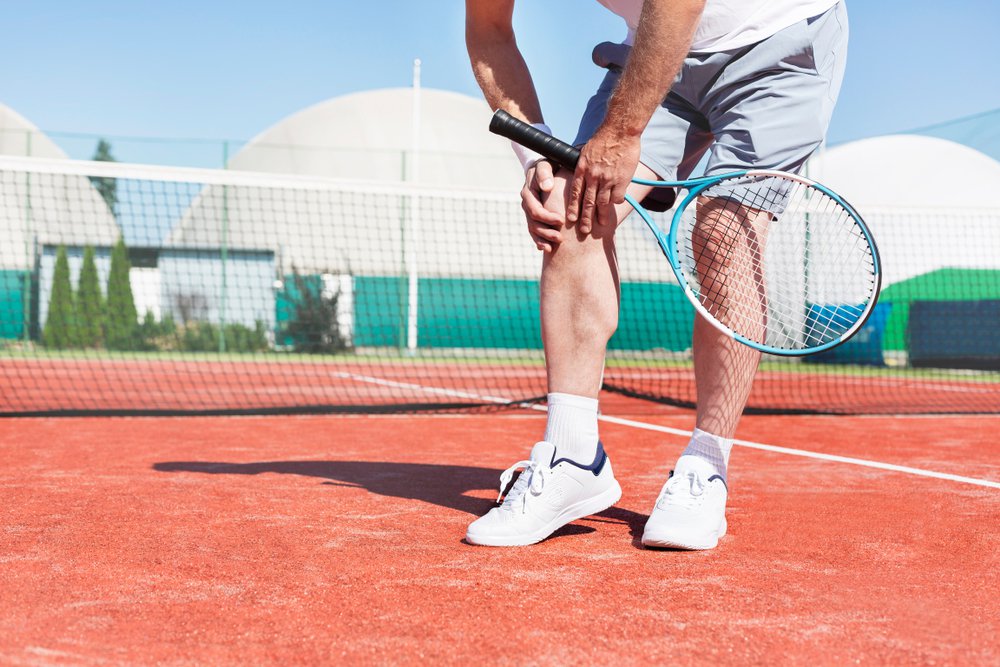With summer in full swing, many people are taking advantage of the warm weather to participate in a variety of outdoor sports and activities. From swimming and tennis to hiking and cycling, there is no shortage of ways to stay active and enjoy the season. However, with increased activity comes an increased risk of sports injuries. Whether you are a seasoned athlete or just starting out, it is important to be mindful of the potential risks associated with summer sports and take steps to prevent injury.
At Orthopedic Specialists of SW Florida, our orthopedic specialists are dedicated to providing patients with a comprehensive approach to treating injuries and administering preventative care.
Here are 5 summer sports injuries to avoid.
-
1. Bone Fractures
Bone fractures are among the most common summer sports injuries, particularly in activities that involve high-impact movements such as running, jumping, or contact sports. Fractures can occur anywhere in the body, but are most commonly seen in the arms, legs, and ankles.
Symptoms of a fracture can include severe pain, bruising, swelling, and difficulty moving the affected area. If you suspect that you have a fracture, it is important to seek medical attention right away. Treatment may involve immobilization with a cast or brace, surgery to realign the bone, or other interventions depending on the severity of the injury. To avoid fractures and other injuries during summer sports, it is important to take proper precautions such as warming up before activity, wearing appropriate protective gear, and avoiding excessive strain or overuse of muscles and joints.
It is also important to listen to your body, rest when needed, and seek medical attention promptly if you experience any pain or discomfort. By taking these steps, you can reduce your risk of fractures and other injuries, and enjoy a safe and healthy summer sports season.
-
2. Concussions
Concussions are another common type of summer sports injury, particularly in high-impact activities such as football, soccer, and basketball. A concussion occurs when a blow to the head or body causes the brain to move rapidly back and forth, resulting in temporary changes in brain function.
Symptoms of a concussion can include headache, dizziness, confusion, sensitivity to light or noise, and difficulty concentrating or remembering. If you suspect that you have a concussion, it is important to seek medical attention right away. Treatment may involve rest, medication, and other interventions depending on the severity of the injury. To avoid concussions and other head injuries during summer sports, it is important to wear appropriate protective gear such as helmets and mouthguards, and to avoid risky behaviors such as diving or tackling headfirst.
It is also important to follow proper technique and rules for your sport, and to be aware of your surroundings at all times. By taking these steps, you can reduce your risk of concussions and other head injuries, and enjoy the sports you love to partake in during the summer
-
3. Rotator Cuff Injuries
Rotator cuff injuries are a common type of summer sports injury, particularly in activities that involve repetitive overhead movements such as swimming, tennis, and baseball. The rotator cuff is a group of muscles and tendons that attach the shoulder blade to the upper arm bone, and help to stabilize and move the shoulder joint. Overuse or strain of these muscles and tendons can result in inflammation, tearing, or other damage, leading to pain, weakness, and limited range of motion.
Treatment for a rotator cuff injury may involve rest, physical therapy, medication, or surgery depending on the severity of the injury. To avoid rotator cuff injuries during summer sports, it is important to warm up properly before activity, use proper technique and form, and avoid overuse or repetitive movements that can cause strain on the shoulder joint. It is also important to listen to your body, rest when needed, and seek medical attention promptly if you experience any pain or discomfort.
-
4. Strains and Sprains
Strains and sprains are among the most common types of injuries that occur during summer sports. A strain occurs when a muscle or tendon is stretched or torn due to overuse or sudden impact, resulting in pain, swelling, and limited mobility. A sprain, on the other hand, occurs when a ligament is stretched or torn, leading to similar symptoms. These injuries can occur in any part of the body, but are most commonly seen in the ankles, wrists, and knees.
Treatment for strains and sprains may involve rest, ice, compression, and elevation (known as the RICE method), physical therapy, or medication depending on the severity of the injury. To avoid strains and sprains during summer sports, it is important to warm up properly before activity, use proper technique and form, and avoid overuse or sudden movements that can cause strain on the muscles and joints. It is also important to wear appropriate supportive footwear and protective gear, and to be aware of your surroundings at all times.
-
5. ACL Tear
An ACL tear is a common injury for those who partake in summer sports, particularly in high-impact activities such as soccer, football, and basketball. The ACL (anterior cruciate ligament) is one of the major ligaments in the knee joint, and helps to provide stability and support during movement. An ACL tear occurs when the ligament is stretched or torn due to sudden twisting or impact, leading to pain, swelling, and instability in the knee.
Treatment for an ACL tear may involve rest, physical therapy, and surgery depending on the severity of the injury. Recovery from an ACL tear can be a lengthy process, often requiring months of rehabilitation and gradual return to activity. To avoid ACL tears and other knee injuries during summer sports, it is important to warm up properly before activity, use proper technique and form, wear appropriate supportive footwear, and avoid risky behaviors such as jumping or landing awkwardly.
It is also important to listen to your body, rest when needed, and seek medical attention promptly if you experience any pain or discomfort in the knee. By taking these steps, you can reduce your risk of ACL tears and other injuries to ensure a safe and healthy summer sports season.
If you are struggling from a sports-related injury, or are interested in learning more about treatment options for injuries, contact our orthopedic specialists at Orthopedic Specialists of SW Florida or schedule an appointment directly from our website today.


